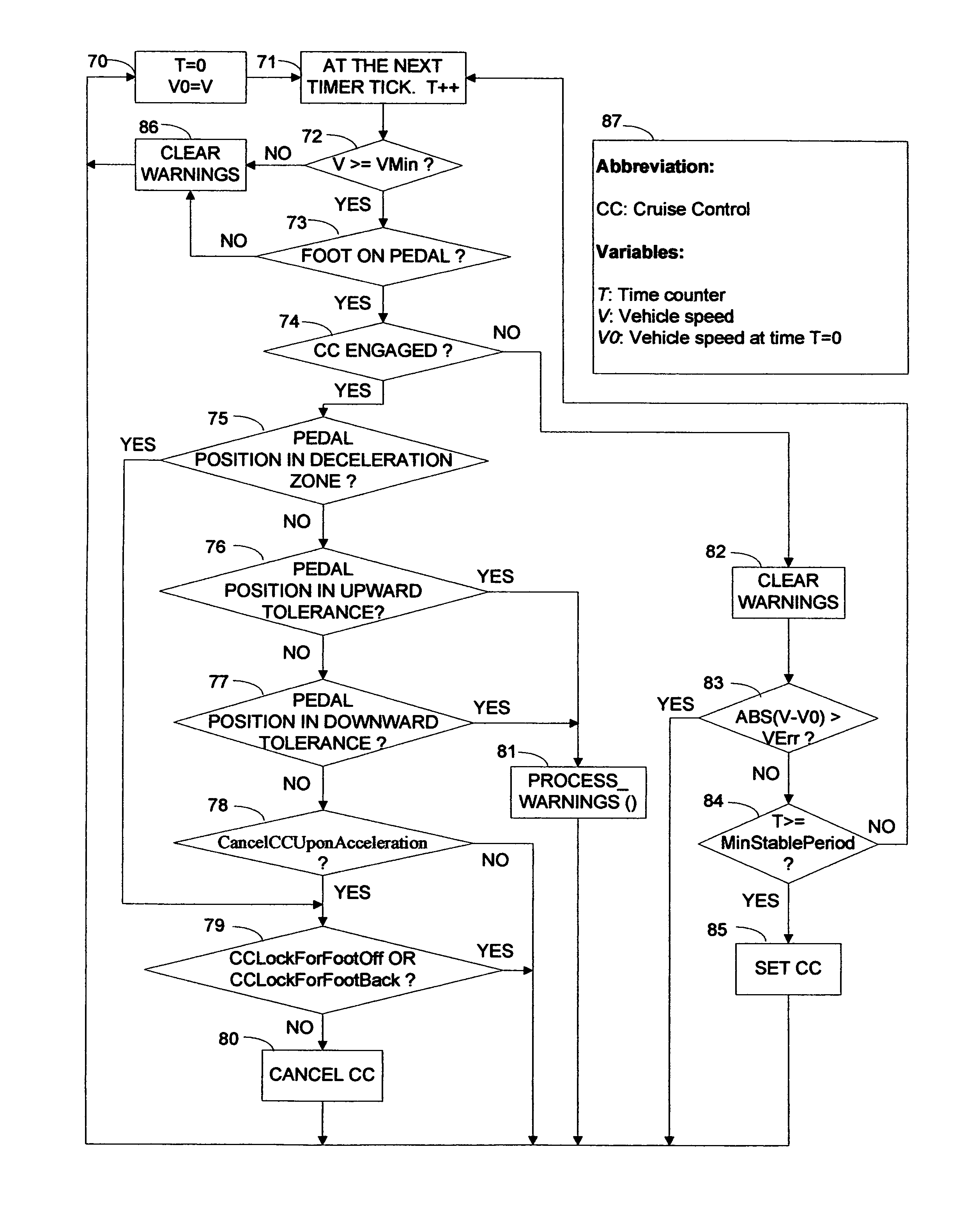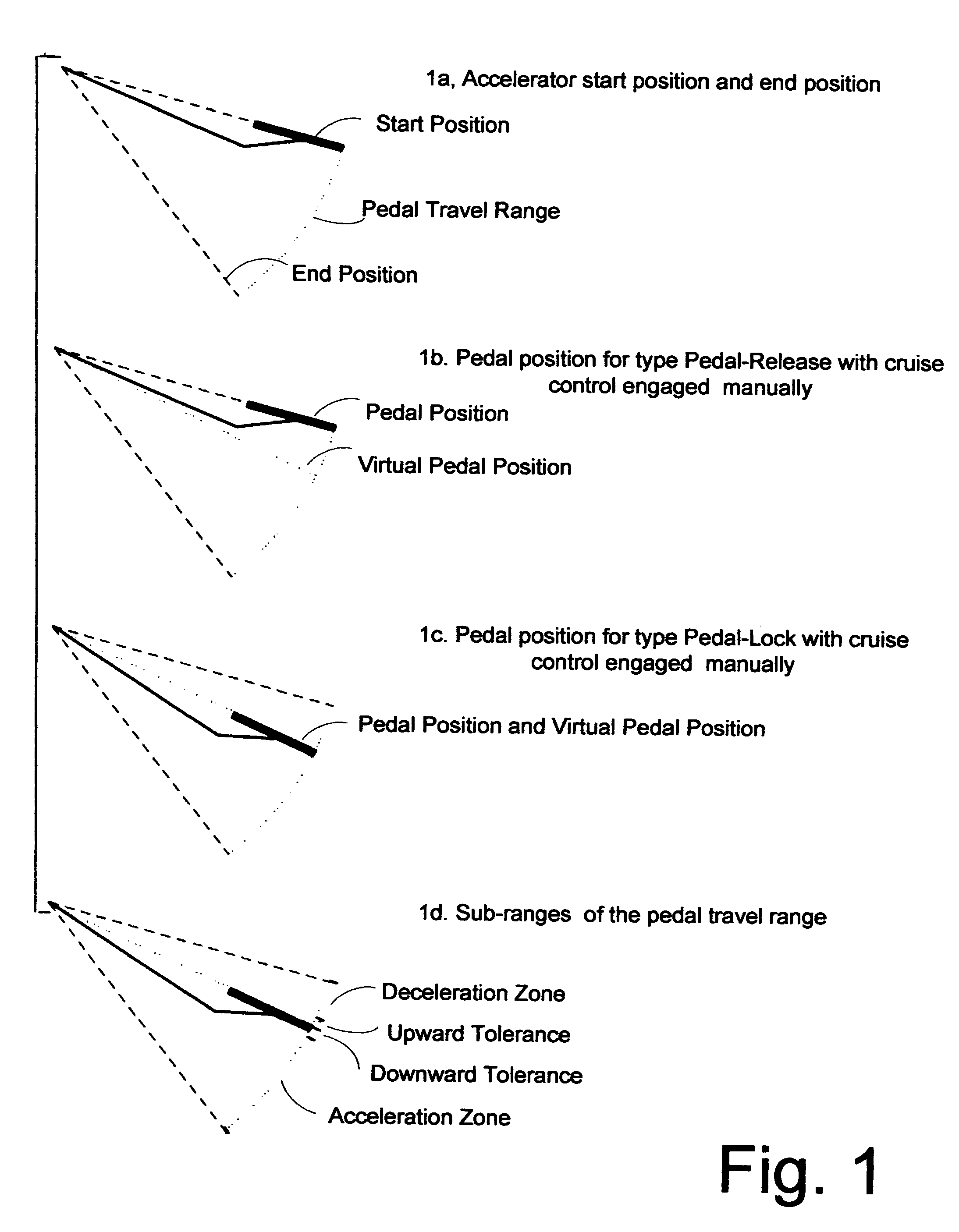Speed stabilizer for automatically turning conventional cruise controls on/off in dense low speed traffic to save fuel
- Summary
- Abstract
- Description
- Claims
- Application Information
AI Technical Summary
Benefits of technology
Problems solved by technology
Method used
Image
Examples
Embodiment Construction
[0013]The invention employs a unique speed stabilizer, which is an embedded system, or an add-on device to motor vehicles equipped with conventional cruise controls. The speed stabilizer advantageously utilizes standard inputs from standard motor vehicle components, and sends signals to set or cancel conventional cruise control apparatus. As an add-on, it works with all types of vehicles that provide these standard inputs for the device. Beneficially, it does not change any existing vehicle design, including the accelerator and engine output mapping schema and the cruise control software algorithm. The minimum speed for using conventional cruise control is about 35 miles / hour. Importantly, this minimum speed can be lowered to 20 to 30 miles / hour with the speed stabilizer of the present invention. This will cover the speed range for most local and highway driving, and enable the cruise control to be used without drivers laboriously actuating the conventional cruise control buttons an...
PUM
 Login to View More
Login to View More Abstract
Description
Claims
Application Information
 Login to View More
Login to View More - R&D
- Intellectual Property
- Life Sciences
- Materials
- Tech Scout
- Unparalleled Data Quality
- Higher Quality Content
- 60% Fewer Hallucinations
Browse by: Latest US Patents, China's latest patents, Technical Efficacy Thesaurus, Application Domain, Technology Topic, Popular Technical Reports.
© 2025 PatSnap. All rights reserved.Legal|Privacy policy|Modern Slavery Act Transparency Statement|Sitemap|About US| Contact US: help@patsnap.com



